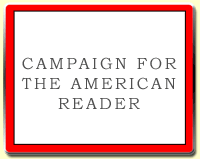 MCA and the Hidden History of Hollywood and Privileged Son: Otis Chandler and the Rise and Fall of the L.A. Times Dynasty.
MCA and the Hidden History of Hollywood and Privileged Son: Otis Chandler and the Rise and Fall of the L.A. Times Dynasty.One of five top books on Southern California he discussed with Eve Gerber at The Browser:
Farewell, My LovelyRead about the other books McDougal tagged at The Browser.
by Raymond Chandler
[Y]ou chose a classic Raymond Chandler novel from 1940, Farewell, My Lovely. Please give us a précis of the plot and explain why you picked this book.
It’s a hardboiled Raymond Chandler murder mystery that’s been made and remade into movies. It’s not only a great read filled with crackerjack characters but it really captures the essence of Southern California, even though it was published well over a half century ago, back when there was no freeway system at all.
I picked Farewell, My Lovely over The Big Sleep, which is another of my favourites, because it covers so much territory in terms of terrain and mythology. It opens at a bar in what is now known as South Central Los Angeles. A rough and tough guy is looking for his ladylove and hires private eye Philip Marlowe to track her down. Ultimately, of course, Marlowe finds the woman, but there’s any number of knocked heads and corrupt cops in between. The messiness of the plot, along with Marlowe’s patented patois, is what makes this novel so LA. Chandler captures the racism, class stratification and general Los Angeles phony baloney in a pulp fiction way. He captures what life in high society and what life for working-class stiffs was like in this disparate area where all these people come – from all over the country and all over the world – to remake themselves.
You’ve written several books about the dark side of the region. It seems like you have more than your share of psychotics. Are there really more serial killers out there? Is there something unique about the underbelly of sunny SoCal?
I’ve always felt that there has been. The quintessential Southern California crime was the Black Dahlia murder – a beautiful young woman was found cut in half in a Los Angeles park. It happened the year I was born so you can’t pin it on me. It was a precursor for dozens of mystifying murders and attendant media uproars that happened thereafter.
Why are such crimes one of the city’s hallmarks? I go back to the notion that people come to California to reinvent themselves. They may come and reinvent themselves as starlets or engineers or computer programmers but they never fully leave behind whothey were. If they were disturbed, damaged or simply sociopaths who enjoyed inflicting harm on others, they bring that with them. Los Angeles is a great place to hide. The city is known as a fame factory but it’s easy to be anonymous.
My first book was about three serial killers – Patrick Kearney, William Bonin and Randy Kraft, who in total killed close to 150 people. They were able to kill with impunity for years in the late seventies because a) they hid in plain sight and b) they used the freeway system to get rid of their victims and distance themselves from the crime. These guys baffled the cops for years.
During my last visit to Los Angles, I felt fortunate to see the work of the serial arsonist whose career culminated with four New Year’s Eve fires. Witnessing one of a bizarre rash of crimes seems like as authentic an LA experience as hiking to the Hollywood sign.
So true. That was a classic Southern Californian-form crime. A guy who came to LA from abroad got a little attention for his first fires so he committed some more, concentrated in Hollywood. Then the media jumped on it and he started playing a hide-and-seek game with the police and getting international headlines.
Farewell, My Lovely features one of the fifty greatest villains in literature.
--Marshal Zeringue



